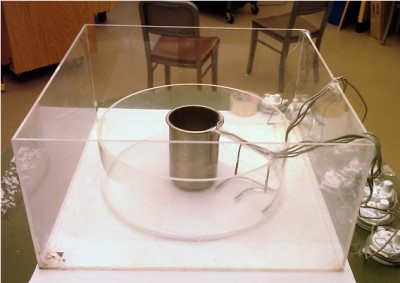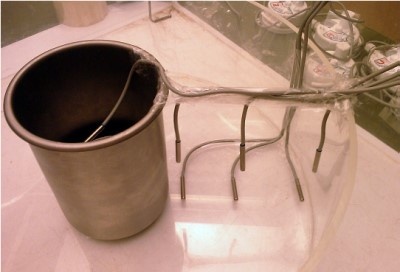Outside Links: Weather in a Tank - General Circulation
Wiki Links: General Circulation Forum for Teachers Posting Help
__________________________________________________________________________________________________
2 Comments
Garrett P Marino
Add your tips below.
mit-s
In the following picture you can see our experimental setup:


We have used the big rotating tank that the GFD Laboratory at MIT supplies. On top there is a co-rotating camera which gives us videos in the rotating frame of reference. Onto the rotating table, we have placed a big white piece of paper. The reason is that the tanks we are using have transparent bottoms. Without the white paper, we would see the green color of the rotating table in the background of our top videos and that would significantly lower the visibility of different dye colors used to visualize the flow.
On top of the paper, we have placed a large square tank (side-length of 60cm), into it a smaller circular tank (diameter 44cm), and into that a metal can (diameter 12cm). The outer tank is filled with warm water (21°C) representing the warm equatorial regions of the earth while the metal can is filled with cold water and ice (at a constant 0°C). Roughly every 20 minutes throughout the experiment, we sucked some of the cold water out of the can and refilled some ice to keep the temperature. The outside water bath dropped by less than 2°C throughout the entire experiment which was sufficiently constant for our purposes such that we did not adjust it.
In the inner tank was the fluid representing the atmosphere. Since we were interested in the temperature distribution in that fluid, we placed six temperature probes in it: one on the bottom and one near the surface each close to the can, half-way between the can and the outside tank, and near the outside tank. You can see our poster taped construction here: